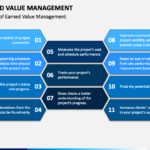And, it is not just influencing. While between the leader and followers, influence is mutual, together, they influence the environment around them in some way, and it goes beyond goals. There is a purpose, a cause which is broad enough to create a vision that connects followers who might have different individual goals. Flexing between leadership styles is masterful.
What’s your experience with these styles?
- Authentic Leadership evolved in the light of major scams and scandals, a blind race for profits and personal gains and a short-term perspective, involving the CEO of top organizations. It focuses on the charter of the leader as the driver of positive interrelationships. Authenticity is about being genuine and not attempting to play a role; not acting in a manipulative way.
- Autocratic Leadership takes ultimate control of decision making without consulting others. An autocratic leader possesses a high level of power and authority and imposes its will on employees. This type of leadership proves to be useful where a close level of supervision is required. Downside is creativity and morale suffer because input is not valued and is often detested. This results in job dissatisfaction and staff turnover.
- Laissez-Faire Leadership does not exercise control on its employees directly. Assumes employees are highly experienced and need little supervision, fails to provide continuous feedback, doesn’t supervise team members, and results in high costs, bad service, failure to meet deadlines, lack of control and poor production.
- Informational Leadership – The Informational leadership style is facilitative, focuses on raising one another to higher levels of motivation and morality.
- Transformational leadership aims at influencing changes in attitudes and assumptions held by organizational members and building commitment for organizational goals and objectives. A high level of communication exits between managers and employees, and it is under the guidance of leaders that employees meet their goals and enhance productivity and efficiency.
- Transactional Leadership – Transactional Leadership involves management by exception, intervention, and punishing those who make errors. This leads to negative emotions and performance on the part of the subordinates. Requires close monitoring of subordinates, who would surely not like it, and if they felt constrained, their performance might not be best. Additionally, some of their voluntary behaviors, like citizenship behaviors would be reduced.
- Bureaucratic Leadership – A leader believes in structured procedures and ensures his or her employees follow procedures to a T. This type of leadership leaves no space to explore new ways to solve issues and in fact work by the book. This type of leadership is common in hospitals, universities, banks, and government organizations to reduce risk, corruption, and or to increase security. Self-motivated individuals who are highly energetic often feel frustrated with the organization’s inability to adapt to the changing environment.
- Charismatic Leadership is visionary and works by infusing a high amount of energy and enthusiasm. Role models high performance as an expectation. Is committed to the organization and believes more in his vision. Boosts the rest of the organization. Charismatic leadership may pose a risk upon departure. It might take a lot of time and hard work by the company and new leader to win the confidence of its employees.
- Participative leadership is democratic, consults employees and seriously considers their ideas to make decisions. Helps employees accept change more easily because they had a role in the change process. Participative Leadership may be required for tasks that are non-routine or unstructured, where relationships are non-authoritarian and the subordinates’ locus of control is internal.
- Directive Leadership provides guidance about what is be done and how to do it, scheduling work, and maintaining standards. Thus, it may be inferred that directive leadership is effective as the subordinators have an external locus of Control, lack experience, have a high need for clarity or a low need for achievement. Also, when the task is unstructured, or there is a conflict between workgroups, a more directive style is useful.
- Supportive Leadership shows concern for the needs of the employees, the leader is friendly and approachable. Is more suitable for highly structured tasks, under bureaucratic and formal authority relationship. Leader supports their subordinates officially and sometimes personally. A leader always tries to fulfill their requirements, it boosts employees’ morale.
- Achievement Oriented Leadership encourages employees to perform at their highest level by setting challenging goals, emphasizing excellence, and demonstrating confidence in employees’ abilities. It’s largely suitable for unstructured tasks, where the subordinate need for achievement is high.
To learn about more about leadership don’t missed to book a consultancy call now
360-789-3711




